What do you need to do this month to keep your garden looking healthy? How can you be proactive NOW so that you get the best results NEXT month?
These are the questions that I hope to answer in my ‘Monthly Gardening Guide Australia’ series. Knowing what to do each month will go a long way towards minimising the amount of time that you need to spend in the garden.
More...
Monthly Gardening Tips Australia
If you can follow the seasons and understand the climate you live in, doing a few bits and pieces each month will help you maintain your garden in a neat and efficient way.
Exactly what your garden needs in any given month does depend on whether you live in a cold, temperate or tropical climate. However what you must do in a cold climate can also be beneficial in a tropical one.
As such the advice I give will be ‘general’ but I will try and place the climate type that requires it in brackets.
January Gardening Advice Australia
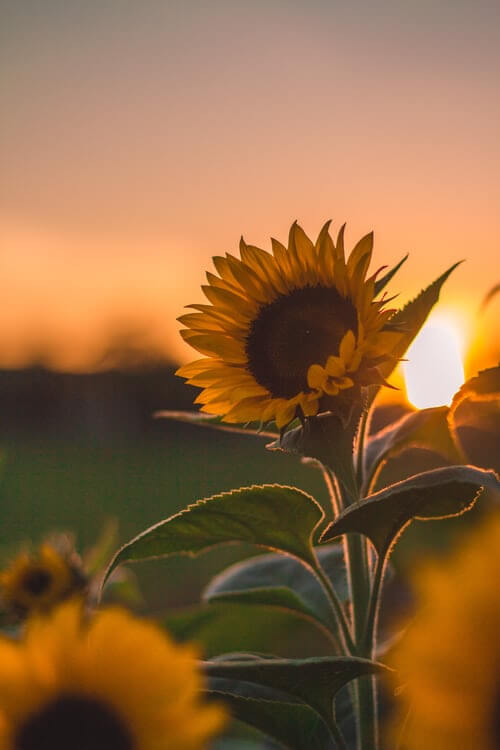
In Australia, January is a very important month in the gardening cycle because it can often be a very hot month. It is in January and February that your proactive work in the garden, or lack there off, will show.
If you have just left your garden to its own devices then it is this month that things will really start to look pear shaped. If you have been good and doing the few things required each month, continuing this now will go a long way towards making sure your garden survives the harsh Australian summer.
January is a good month to take cuttings from your favourite shrubs(cold climate). As long as you have kept the watering up and therefore kept your shrubs healthy, cuttings should take well in January with the sun and heat on offer.
Obviously cuttings require a bit of attention and a lot of water to make sure they survive. January is also a big month for fruit pests. Check your fruit trees for the various pests that are common to each individual fruit tree type and if needed, treat them.
Your local nurseries are a good source for advice on what to treat particular fruit trees with. (cold and tropical) Another good tip for January is to prune your most vigorous growing plants just slightly.
In particular your roses (temperate) could do with a mild to good prune as this will encourage new growth and lead to a great display of flowers come autumn. Be careful not to make this prune too vigorous and use dependable secateurs for the job.
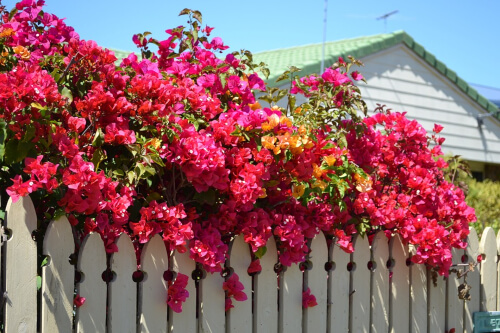
Bougainvilleas may also be trying to take over your garden so prune them back to keep them under control. (tropical) There is also still time to plant annuals like vincas, petunias and sunflowers that can handle full sun so you keep your garden looking great right into autumn.
(See our complete guide on growing annual and perennial sunflowers here.)
Make sure you water them in well and plant them with either a good liquid fertiliser or a good slow release fertiliser. In fact you could give a light sprinkling of either a liquid or slow release fertiliser throughout your garden to keep the nutrients up.


Get Your Free Guide:
Master Growing Australian Natives eBook
A Must Have Complete Guide for Every Australian Garden
Get Your Free Guide:
Master Growing Australian Natives eBook
A Must Have Complete Guide for Every Australian Garden
There you have it. With a bit of care your garden can come out of January looking even better than it did going into it. You can also ensure a solid show right into late autumn with some solid work during the summer heat.
So get out there, slip slop slap and wrap and enjoy your garden in this beautiful weather!
February Gardening Guide

Just beware: you may be having the exact opposite problems to those that I address! There is basically one word which sums up the key focus for gardening in February – Water.
Whether this is because you haven’t had enough of it, or you are one of the many Australians who has had too much, February is an important month to deal with water. Water is particularly important in cold and temperate climates in February.
After a long, dry summer, or even patches of hot summer in these regions, plants that have lacked a good water supply are more susceptible to disease and worse, death.
In tropical climates, particularly this year, water is not the issue but water getting down into the soil may still be problematic. February can be a good time for the application of a good soil wetting agent. If you are not a fan of soil wetting agents, use a pitchfork to aerate the soil.
This is something that would be useful across the board and definitely will be needed for large, grassed areas. The hot summer sun bakes the soil, causing it to form a crust which reduces the ability for water to sink in.
If you are watering your plants and just watching the water run away and not penetrate, you need to either aerate the soil or apply a soil wetting agent. ‘Wetta soil’ is one I have used and used with great effect.
Another good tip for February is to make sure you are regularly dead heading flowers such as roses and dahlias. If you encourage your plants to continue to bud through February they will flower for longer, where as if they are able to go to seed, there is less chance of solid flowering into the autumn months.
February is a month where plants can really start to suffer from disease. Even if plants have been well watered and the water is getting into the soil, bugs are very active during summer and February can easily become a month where they take over.
Check over your plants and make sure if you find leaves or flowers with disease on them, clip them off and throw them out. Don’t compost these because the problem can spread to your soil through the compost.
Check out your local nursery and see what plants they sell a good powder protection for. Roses are one plant that could do with a light rose powder covering to help them fight against aphids and cover tomatoes with tomato dust to ward off caterpillars.
Hopefully your summer vegetables are still growing strong but if they are looking a bit on the bad side you might like to consider starting to get your garden beds ready for the autumn vegetable crop.
Remove dead veggies and compost them. Start cleaning up the garden beds, making sure they are well formed and if they are reticulated, check to see if it is still in fully functional order.
More will be done here in March, these are just some early steps if your summer vegetables are finished.
March Autumn Gardening Australia
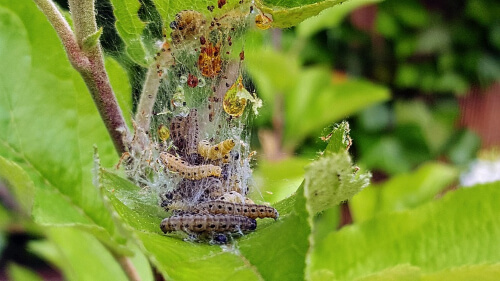
March truly marks a transitional period in the garden. Though the weather can still be very warm in March, as it really has been in Perth during February, March is the month where the temperature does start to head south a little, especially overnight.
This generally makes the garden a cooler place in the morning which makes many gardeners much happier people to be around.
Though this brings many benefits to your gardens, one of the draw backs is that the more mild temperatures make your garden a great environment for bugs, particularly caterpillars!
Keep an eye out throughout March for bugs trying to take over your plants that have fought hard to survive all summer. Treat quickly when found.
With March also marking the beginning of autumn it is a good time to start thinking about what you want in your garden in spring and what needs to happen for that. Yes, winter comes and goes first but a top spring showing requires forethought.
From about Mid-March to May you’ll want to get any winter/spring flowering bulbs in the ground, so perhaps start preparing your bulb garden beds now so that they are ready to go when the time is right.
If you have been putting off mulching then now is as good a time as any to make sure your garden has at least has a little mulch above the top soil. Even if you did mulch this summer, you may find you need to give it a light top up as a lot of mulch may have broken down already.
You could probably get away with a smaller mulching now given that most of the hot weather is behind us and you’ll want good drainage in winter.
The upside to laying a good layer of mulch now is that it will minimise how much you need to add when it comes time for next spring and summer.
There are many mulch options in the market so be sure to check our Ultimate Mulching Guide so you can choose which is best for your garden.

You can also start planting some of your more winter friendly vegetable types, such as broccoli, cauliflower and cabbage. This is also a really good time to try your hand at growing your own garlic as opposed to always buying it from the shops.
Winter lettuces will also thrive throughout autumn and winter. Planting spring onions now would also be a good idea. Growing my own spring onions was one of the best decisions I ever made.
I only planted a few seedlings and they grew and grew and supplied me with all the spring onion that I needed for a long time. You can also often get away with buying some spring onions from the supermarket provided they still have the roots, and planting them.
They do not always survive but this is how I often go with spring onion. The big upside is you can start harvesting now as the plant is already mature. March is also a good month for sowing carrot, spinach, broad beans and peas.
Also, your Asian leaf and root vegetables would do well to be sown in seed form sometime this month.
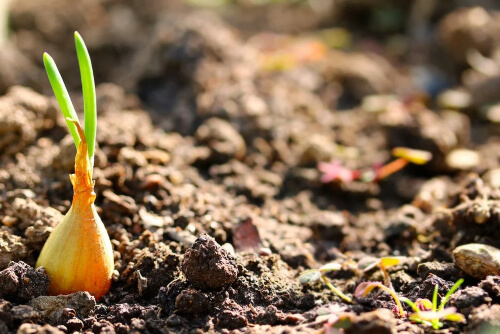
Finally a bit of house keeping could be in order. If you have perennials that have taken over your garden in spots over summer and are coming to the end of their flowering season, consider giving them a good trim or even dividing them and planting them separately.
Some perennials do this better than others, the best way I’ve found to learn is by trial and error so give it a go. Just try to remember, try and leave one section of the plant as undisturbed as you can while removing and transplanting the other section. This tends to help both plants survive the separation process.
April Gardening Tips

Source: gardenerspath.com
Hopefully your garden has made it through summer and is ready to receive the coming winter rains, unless you live in tropical Australia whereby you have received much of your rainfall OVER summer!
The east coast was buffeted by rain AGAIN this summer…but not everyone’s garden has received a lasting impact so making the use of winter rains is pivotal.
It can actually be around now that gardeners make the biggest mistakes because you start to think ‘well we’ve survived summer, now we’ll just sit back, relax, and let winter take care of our garden by itself’.
Wrong! What you do now over the next month or two will directly effect how well your garden survives the NEXT summer!
Autumn is a fantastic time to be out and about in your garden. Usually, in most parts of Australia, the weather starts to become milder but there still remains a significant number of sunny days to potter around in.
Right now is a great time to prune your summer flowering perennial plants, like lavender, ready for the winter quiet. However not all plants should be pruned yet. Some people make the mistake of pruning roses too early.
April is still too early for roses because if you prune them now, they’ll start growing back too soon and won’t perform as well. Save your roses for June-August pruning. Continuing to dead head roses is important though.
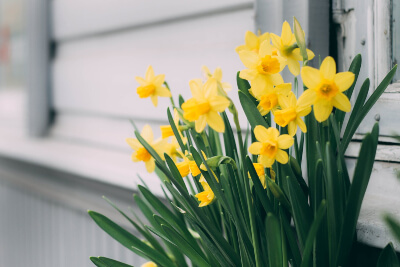
April is also a great month for planting spring bulbs, such as daffodils. This will give them plenty of time to get set and grow ready for a beautiful showing come September.
It can also be a good time to spread a light organic fertiliser around your shrubs and trees, ensuring compatibility with the types of soil for crops growing in your garden.
Though they’ll receive Winter rains and won’t be growing as much, they still require nutrients to survive the cooler winter.
Autumn, and in particular April, can be a great time for planting trees because trees really do require good amounts of water to take root. Planting now will give them a month or 2 of good, sunny weather while still receiving some good rains, and then lapping up the rains of winter.
The milder weather will also help because the trees won’t experience sun damage as easily before they have the root system to cope with it. It is also not too late to get your winter vegetables in, especially if you get them down in early April.
Vegetables such as broccoli, cauliflower and cabbage and your leafy Asian style vegies really need to go in now if you want to get the best out of them throughout winter. Use the next few months to really sow into your garden.
As the rains start to fall in cooler and temperate climates you won’t have to spend as much time worrying about and making sure your garden has water so really work on other tasks, such as preparing garden beds for spring and summer annuals, fertilising, mulching and the like.
Take the sunny days provided to you to provide the best benefit to your garden so that when Spring and Summer comes again your job will be easier!
May Gardening Advice
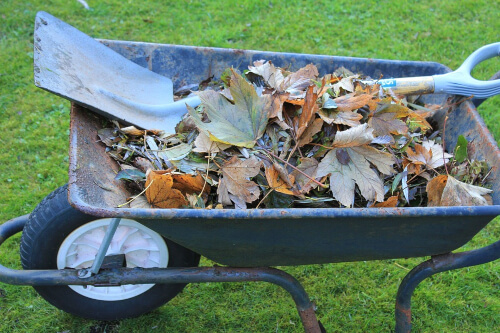
May is the last month of autumn, your last month of gardening before winter really starts to hit. A lot of plants will be entering more dormant times over the next month or two so May marks a really good time for a healthy trim.
You could start pruning your roses in May however I would recommend you wait until June or July. Other shrubs and hedges that have completed flowering however could handle a healthy trim, bringing them back inline and into the shape you desire them to be.
May is also the last month to get your plants ready for winter. If you have a lot of delicate plants in pots out enjoying the summer and autumn sun, now is the time to find a more sheltered spot for winter.
Many pot plants are find outside during winter but make sure your pots have good drainage, you don’t want the roots to be soaking in water 24/7 as this can cause the roots to rot.
Potted plants do need a good amount of water, which self watering pots do well, but they also need to have good drainage.
Make use of the fallen autumn leaves around your garden. Pile them up together in a compost bin or a corner of your garden so that they can break down and then be used as mulch.
Some of the best gardeners I know spend very little on mulch because they use the natural seasons their garden goes through and the waste produced (such as leaves) to produce good, rich mulch themselves.
May is also your last chance to get Spring bulbs in, try and get them sown within the first 2 weeks of May for best results this spring. Early May is also a great chance to plant vegetables so that you get a bumper winter crop of vegetables throughout the winter months.
If you leave planting till June you won’t start to see the produce until July or even August, depending on what you are planting, which is really starting to push into the times to be preparing for spring. Plant some broccoli, carrot, spring onions or winter lettuces.
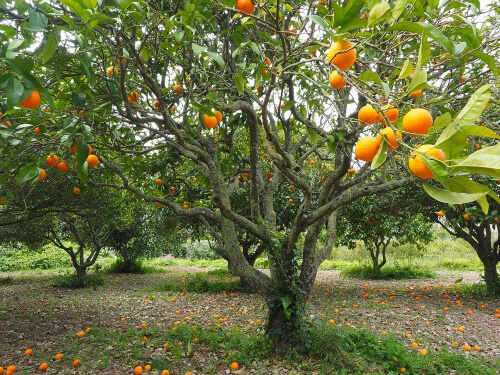
If you want to plant some citrus trees you are not too late. Citrus trees, and trees in general, really like to be planted in Autumn because it means they usually receive a good mix of sun and rain so that they can really develop their root systems, then get the rains of winter before they have to cope with the hot sun of spring and summer.
Good luck with your gardening in May!
June Winter Gardening Australia

Winter is here! For some people this is cause for celebration. For others it is cause for commiseration. For your garden, it is just another season which will either see it go from strength to strength or see it fall over, depending on how well you care for it.
Check out our guide to winter gardening and how to prepare your garden for winter.
There are many plants which hibernate throughout winter and so June is a good time to start giving them a trim. Roses can start to be pruned now though I myself usually wait until July to August.
Other flowers like Hydrangeas would benefit greatly from trimming off the old flowers and growth to allow it to jump into spring with a burst of energy and healthy new shoots. Remember, pruning promotes growth.
If you have decided that you actually want to plant a new rose garden then June is the month for you! By planting new roses now, you give them a good chance to get established throughout winter and ready for solid growth and flowering into spring.
Pick a mix of colours and aromatic roses and place them in a well prepared garden bed. Feed them a good rose fertiliser such as Yates Acticote slow release for roses. Also make sure you mulch well.
Don’t mulch too close to the stem, leave about a 15-30cm gap all the way around. This will help keep moisture close to the young plants but will also help to fight off frost in cold areas.
Make sure you keep your winter vegetables well fertilised. Thrive All Purpose fertiliser is as good as any, in my opinion, for this. Follow the directions on the label for application.
Generally it is best to apply fertiliser to your winter vegetables every two weeks. This will help your veggies to grow fast and give you a solid yield. Also during winter it is very important that you get on top of your garden weed situation.
Preferably this is solved by maintaining a solid layer of mulch but if you still have not gotten around to this the manual option is important. If you don’t get on top of weeds in winter, they will spread because the extra water available will allow them to really thrive.
This can cause them to move into new areas of your garden that may have previously been free from the serial pests.
June is another good month to split up shrubs like daisies and lavender and plant them in other parts of your garden. Make sure you choose big sections to transplant.
The extra water (in mild and temperate climates) will help the plant to establish well but the lack of sun can still be an issue. Also make sure that you cut off any flowers, both alive and dead to ensure that all of the plants energy can be directed towards growing new roots.
Gardening on July
We are now well and truly in the thick of winter and I am feeling it. I have to make a confession right now…I am not a winter lover. However there is one upside(or perhaps downsider, depending on your viewpoint) to winter, there are plenty of tasks to complete in the garden!
Probably one of the most important tasks to do during the month of July, if you are a rose grower, is to give your roses a strong prune. There are varying suggestions when it comes to pruning roses.
Some say to remove approximately 1/3 of the plant, some suggest removing up to 2/3 of the plant. I myself lean towards the 2/3 suggestion simply because I have found that the harder you prune the rose, the better they seem to grow back and also the more control you have over the size and shape of new growth.

Source: hanfordsentinel.com
Roses are very hardy plants, regardless of what you may hear. As long as they have sufficient water (the main cause of rose death) they can survive some very harsh conditions.
My Grandad (a non green thumb) once ‘pruned’ his mums roses by mowing over them. Not only did they survive…they thrived. They grew back far better than before. The moral of this story? Give your roses a strong prune this July!
A few pruning tips. Try and prune in the middle of the day. This gives the plant time to adjust to its new hair cut before dealing with the cool of night. Also, when you are trimming a stem, try and make the cut at a 45 degree angle.
Your roses will heal better and have more ability to fight of disease if you do this. Now we are done with talking about roses another issue that you may face in the winter is frost, especially if your go through a cold, dry spell in your area.
When overnight temperatures drop down to close to 0°c your plants may experience frost. To help limit frost damage the best tip I can give you is to make sure that your garden beds are sufficiently mulched.
This works because it helps keep more heat in the soil, which enables your plants to better regulate their own heat. They may still suffer from frost but if they have access to heat from the soil, the plant cells themselves should not freeze and therefore your plants will be better off.
Other than this just try and keep on top of the weeds that are bound to be growing in your gardens and lawns. This is a never ending task in Winter. Try and get rid of flowering weeds in your lawn as soon as possible so as to limit the spread of the weeds as spring and summer draw near.
Happy gardening!
August Gardening Tips
The month of August means that Australia is just about through its winter months. As such, August is all about getting ready for the next season, Spring!
Hopefully you have used your winter months well already to prepare for a great showing from September onwards but there are still plenty of tasks that you can do during August to make sure you have a fabulous garden to look at and immerse yourself in come Spring.
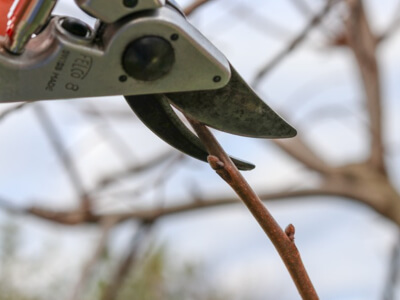
Source: deepgreenpermaculture.com
If you have not already, now is the time to finish of pruning your dormant plants, especially rose bushes. From late July to August they will start to grow vigorously again ready to absolutely take off once the weather starts to warm up.
Remember, try to always prune at a 45 degree angle because this helps the plant heal better and therefore limits the chances of pests or diseases taking hold of your freshly pruned plant.
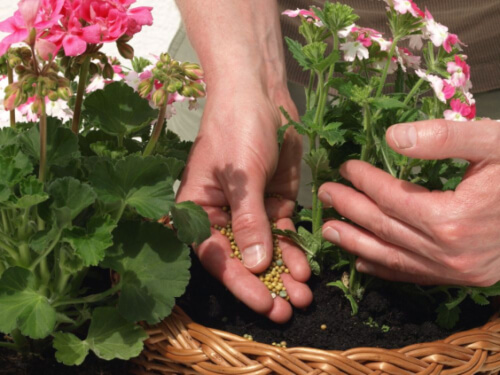
Source: edmontonjournal.com
There are two other key tasks to complete during August. One is to make sure that you apply a good fertiliser, preferably a slow release fertiliser, to all of your plants and to also make sure you apply a good lawn fertiliser over all your grassed areas.
You want your entire garden to be able to take advantage of any late August rains and then the warmer weather which comes around Mid September. The other key task is to ensure that all your garden beds have a healthy layer of mulch.
Though this winter has been quite dry in most parts of Australia, you still want to lock in as much of the moisture that has fallen as possible. Once again, the weather does generally warm up in September which means more moisture will evaporate.
This is limited by a good 10cm thick layer of mulch. At this time of year your winter vegetables will be starting to come to an end. August is a good month for you to start to decide what vegetables you are going to want to grow in Spring.
Some good vegetables to consider for Spring are carrots, lettuce, leeks, onions, spring onions, peas, Asian vegetables and beans. You may also like to grow your own strawberries.
If you are someone who likes to try their hand at growing your own vegetable seedlings then you could buy some seedling trays, fill them with a good combination of potting mix and vegetable soil mix and sow some of the above mentioned vegetables as seeds into these trays.
Preferably keep these inside because a warmer environment will help with germination. You might also like to sow some tomato seeds for mid to late Spring.

August is also the time to start thinking about what annuals you want to have and to start planting them. Plants like Petunias, Marigolds, Vincas and the like are good choices.
Most nurseries will be stocking themselves to the hilt with a wide range of annuals for this Spring season so why not head on down to your local nursery and check out what stock they have in store for you to consider this Spring?
September Spring Gardening Australia
Any gardener knows that September marks the beginning of the pay off for all your preparation work throughout winter and these gardening tips will help you to grow a better garden.
If you have worked hard, September and spring will be an absolutely marvellous time in your garden. What makes September such a good month for gardens is the fact that, in general, around Australia, the weather starts to warm up with more sunshine hours.
This leads to a slightly warmer soil temperature. However there are still occasional showers (and even some storms) which supply much needed moisture so that your plants can make the most out of the sunny weather.
This is slightly different in tropical regions where the rains will actually be starting in the next month or so after the dry season. So what do you need to do this month?
Well, there are two things you must do during spring, and therefore begin this month; enjoy the fruit of your labour and start to prepare for summer.

1. Enjoy the fruit of your labour
September is a good month to plant some annuals. Some Australian favourites include ones such as petunias and marigolds, as listed previously. Though these are not Australian natives, they can be planted in and around your native plants to spice up your garden with a little colour.
Local nurseries will have a large array of annuals to choose from so why not head down and pick some out? Make sure you spend some time out and about your garden, soak in the sun, and enjoy the spring blossoms.
Perhaps even look for a local wildflower show to go to one weekend to gain some inspiration. There is nothing like seeing Australian natives in full bloom out in the wild to inspire you and give you ideas of how to best grow them in your own garden.
Even if you don’t use Australian natives, wildflower shows will help you see how you can best utilise the Australian landscape and garden design in your backyard. As your plants blossom, make sure you trim off the flowers when they die.
This encourages your plants to flower again because they really want to produce seeds. September, and spring in general, are also great times for growing your own veggies.
Plant some peas, lettuce, beetroot, carrots and silver beet and if you have not already, it’s not too late to plant tomatoes or beans.
2. Start preparing for summer
The second major task for spring is to make sure that you start to prepare your garden and grassed areas to cope with the summer heat. If you have any dead patches of lawn, dig up a couple of runners from other spots in your grass to replace them with.
This is mostly effective with buffalo-style grasses though couch grasses will respond as long as you get some roots. I like to find runners that have grown in places where they were not meant to for use.
Anyone who has grass knows that keeping it separate from your garden can be a big task by itself! If you take these troublesome shoots and plant them in dead spots you effectively ‘kill two birds with one stone.’
Make sure that your garden beds are sufficiently mulched now. Don’t wait for summer because the weeds will pop up in abundance from late winter if you do not have sufficient mulch.
Plus, if you mulch well now, your soil will be improved so that is it better prepared to handle the heat of summer, and, in the case of tropical Australia, the wet of summer.

If your garden is already littered with weeds, clear them out and get mulch down before optimal growing conditions begin and make weed control almost impossible.
Water Your Garden
Watering your garden is a no brainer, but it is important to water plants properly, especially before the hotter months begin to hit. A good long, deep, soaking water is the best approach.
This will encourage your plants to send roots deep down into your soil to chase the water, rather than having shallow top roots a few cm from the surface.
When summer rolls around, this means that these deep roots have access to moist soil for longer than roots in the shallow upper soil area that is much quicker to dry out, meaning that on those stinkers, you’re less likely to lose your favourite shrub!
Keep on Mulching

It’s such a simple way to keep your garden the happiest it can be through summer. Mulch acts is a couple of ways; by protecting the soil from direct sunlight and heat, and by adding organic matter as it breaks down.
In summer, we’re most interested in its protection of our soil. Keeping away sunlight and heat means less moisture is lost from the soil, meaning more for your plants!
A good covering of fine wood chips or sugar cane mulch about 15-20 cm deep is the best way to go. Combine this with the watering style we just mentioned, and you’re sure to beat those hot summer days.
Time for Pruning
If you’ve fallen out of love with an overgrown shrub or tree during winter and want to give it a heavy prune, now is the time. Giving it a good haircut just above a node or bud with clean sharp tools during the cooler spring months, followed by plenty of water, will allow the plant to recover with minimal stress.
Your plants should be coming out of their winter dormancy around about now, and should bounce back pretty quickly before the hot months come. The closer it gets to summer, the smaller this window gets.
Too close to summer, the heavy prune and hot days will cause too much stress, with possible fatal consequences.
Be sure to check our review on Fiskar tree pruners on the market.
Get Started on Your Summer Crops
If you’re into your veggies, now is the time to get cracking on your summer crop. You should be getting your soil ready by introducing organic matter and composts to your gardens. Manure, composts, and some trace element fertiliser are best.
Mixing this through your soil not only gives your plants the nutrients they need, it can also help with water retention. Other things to consider for your veggie patch are structures for beans or tomatoes to grow on, companion plantings for pest control, and most importantly, what you want to eat!
Tomatoes, chillies, capsicums, zucchinis and a lot of leafy vegetables are easy and fun to grow in summer. Go buy a seat. No really. Buy yourself a nice seat and place it in your favourite part of your garden.
Hammocks are good, too. You’ve worked so hard on making your garden a place you like, and it is there to be enjoyed. So take some time to savour your backyard paradise, and enjoy our amazing summer days.
By following these five simple and easy steps, you’ll be enjoying your happy and thriving garden all summer long.
October Gardening Guide
October is all about getting the most out of your garden in a season where growth is the norm. Hopefully your spring flowers are well into their blooming phase now and will therefore be requiring some food.
Plant Something New
Another great idea for the month of October is to plant some new plants. With the weather generally warming up around Australia, the soil temperatures will have increased and the night time temperatures generally are not getting as low.
This makes October an opportune month to put some more plants in to take advantage of the many months of great weather ahead.
In the vegetable garden
Make sure you check your young vegetable seedlings for pests; snails in particular. I have found snails to be very active in October.
If you are finding snails to be a hassle, either try using snail baits or, if you want to grow an organic vegetable garden, try companion planting which means finding plants you can place together where something about the one plant will stop bugs attacking the other.

An example of this is planting marigolds around your vegetables to limit caterpillars. The scent of marigold flowers put off caterpillars, so they leave your vegetables that are close by alone.
There are a plethora of resources on companion planting online and most nurseries can help you learn what goes best with what. Another organic approach is a trap. Bury a small tin or container at ground level, leaving the top open.
Fill the trap ¾ full with beer. The snails will be attracted to the beer and will fall in and drown.
What to Do with Your Potted Plants
If you have lots of potted plants, especially ones that have been indoors during winter, you may like to seriously consider re-potting them. They will be trying to grow just like all the other plant in your garden.
If they have been sitting in the same pot for over a year, there is a strong chance that their roots will have grown as much as is possible. Pull them out, untangle the roots very gently (you don’t really want to break any of the roots off) and place them in slightly different, preferably bigger, pots.
Basically, the bigger the pot, the bigger the plant can grow, at least until it reaches the normal size range for that plant. Include some slow release fertiliser and fresh, good potting mix to improve the health of your re-potted favourite.
Keep Weeding!
Finally, make sure that you stay on top of weeds, especially those that might be trying to pop up in your grass. Hopefully you have followed my advice and mulched your garden, so weeding should be easier.
Don’t let any weeds that have made it through your mulch take hold, they’ll be harder to remove. Here are the best weed killers available on the market.
November Gardening Tips
Ah November, the last month of Spring, the last chance to prepare our gardens for summer. I really do feel like November is more about the next three months than it is about itself.
If you live in a tropical climate, you may have already started to receive the summer rains, and this will only continue. If you have large grassed area’s, make sure you either manually aerate them with a garden fork, or you apply a good soil wetting agent during November.
Even your gardens could do with a bit of soil wetting agent to make sure they can absorb and dissipate the large quantities of water about to come their way. You’ll also want to apply a good lawn fertiliser and a good garden fertiliser to the various area’s of your garden.
If you live in the more temperate or cool climates of Australia, your story is very different. Far from expecting drenching summer rains, temperate and cool climates can usually expect a very dry next few months.
Because of this, a lot of the tasks for November are based around water management. Like the tropical climates, an application of soil wetting agent, if you haven’t done so already, would be beneficial.
Rather than preparing for lots of water, this is to ensure that any water that does fall makes it to where it needs to be—the roots—and doesn’t sit on top of the soil surface for the sun to evaporate.
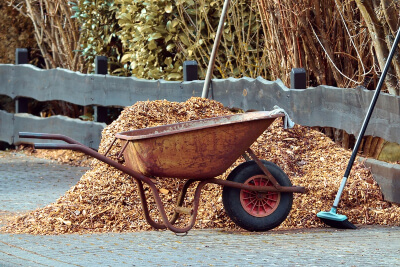
I also tend to say this every month, but if you have ignored me 9 times, you’ll have to ignore me a tenth. Mulch, Mulch, Mulch! Mulch in summer is your best friend.
It will help keep the soil moist, stop the sun being able to cause large scale evaporation, and provide much needed organic materials throughout the summer months. Mulch your garden!
If you have spring flowering plants that are starting to finish their flowering you might like to consider giving them a prune now. If you have plants that flower from Spring through summer, continue to make sure you remove the spent flowers because this will encourage most plants to at least try and flower again.
Spring and summer flowering bottlebrushes are a prime example. Cut off the dead flowers and you will likely get another display sometime during summer.
It may also be time to remove your spring annuals if they are no longer looking healthy. Local nurseries are stocked full of summer annuals and November is a great month to get them growing.
In most temperate and cool parts of Australia, November is still relatively mild, compared to Dec-Feb, so planting summer annuals now will give them a month to prepare for the summer sun.
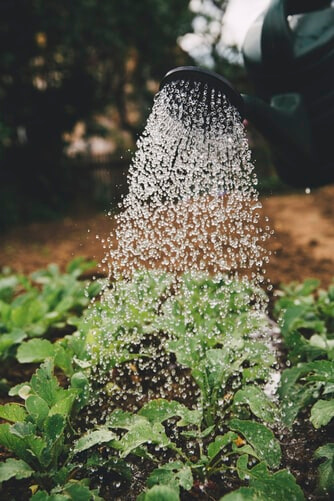
Keep an eye on your vegetables and make sure you are watering them regularly. The hot sun will absolutely devastate vegetable plants that are low on water. Good water and the right amounts of shade will significantly help in achieving a healthy vegetable garden this summer.
December Summer Gardening Tips Australia
December is here which marks the start of Summer in Australia. What this month in the garden looks like really depends on how well you have prepared for summer.
If you have mulched your garden, fertilised it, taken the steps I recommended throughout Spring then Summer shouldn’t really be too bad. However, if your soil is bare, you haven’t given it a dose of wetta soil or fertiliser then you still have a bit of work to do!
During summer you need to make sure that your plants are well watered. As I have said again, and again, and again, mulch helps to hold moisture so if your garden is well mulched then you can, most likely, get away with watering once every day or three.
Vegetable gardens need a little more frequent watering. I’m watering mine once a day and twice if the temperature hits 35+. I personally like to water early in the morning (before 9am), especially for garden beds that don’t have the morning sun however watering at night is more than fine.
Some of your plants may wilt a bit more in summer than they do other months. If you have garden beds that either cop full sun or the afternoon sun, perhaps consider adding some shade in the form of shade sails or shade cloth.
During summer it is very important that you look after your grass. I know where I live the water restrictions are tough. It is imperative that you have applied wetta soil to your grass OR have aerated it with a fork.
It is also important that when you mow during summer, you raise the blades a little higher than normal. Longer grass helps protect the root system, keeping it cooler, which helps it to survive and stay as green as possible.
To get you ready for mowing, we reviewed the best self propelled lawn mowers and electric riding mowers in Australia.
During summer it is a good idea to give your plants at the very least a monthly feed with a good fertiliser. All purpose fertilisers are fine but if there is a specialist fertiliser, like rose or native fertiliser, use that.
It wouldn’t hurt to be fortnightly or even weekly, as long as the fertiliser you choose doesn’t say otherwise. Keep an eye on your flowering plants. Summer is a regular flowering season for many plants.
Once they have finished flowering, give them a light trim either early in the morning or very late in the afternoon or evening. Afternoon or evening is preferred because this gives your plants a night to get used to their new shape.
If you have prepared your garden well, it should handle summer and provide you with a great backdrop for all the summer BBQ’s you are going to host. Just keep an eye on everything when watering/walking through the garden.
If you notice plants struggling, either increase watering, add mulch where it isn’t sufficient, or add some form of shade. Established plants should cope quite well, but younger plants might need a little extra tender loving care.
Published on September 2, 2021 by Nathan Schwartz
Last Updated on November 29, 2024





Starting a vegie patch in far north west Vic.
What would be appropriate to plant up now?
Hi there Annie,
How very exciting to hear about your upcoming veggie patch!
As far as I know, your climate should be heading into a hot or semi-arid state now with occasional rainfall. Then once autumn returns, a temperate state. This environment is perfect for many herbs and vegetables, especially now as spring is well underway.
Firstly, it’s important to choose the right location for your veggie patch in your garden. A sunny position that has some shelter would be ideal but I imagine you’ve already picked the perfect place.
Here are some of the plants you can consider growing now in your area:
·Tomatoes
·Carrots
·Beetroots
·Cucumbers
·Asparagus
·Zucchini
·Eggplants
·Green beans
·Chillies
·Lettuce
·Potatoes
·Pumpkin
·Sweet corn
One of the great benefits of this particular selection of vegetables is that a lot of them will grow and be ready for harvest before others, meaning you will be able to enjoy a variety of greens throughout spring, summer and even into autumn.
I’ve added links to the guides that we have available in case you need a little more specific information on any of the above fruits and veggies. Alternatively, there should be plenty of helpful information available online.
Here are also some herbs you can consider establishing:
·Basil
·Chives
·Coriander
·Oregano
·Parsley
·Sage
·Thyme
You can refer to our extensive guide for more detailed information on growing vegetables at home.
Be sure to also be aware of fruit flies as these pests can cause severe damage within veggie gardens. You can check out our in-depth guide on fruit fly prevention and treatment for more information if needed.
I hope this managed to give you some insight into what you want to start establishing now.
Wishing you a fruitful gardening experience and many delicious harvests!
Gary Clarke
Hello, your help would be much appreciated because we have run out of ideas!
I live in Melbourne, in a large apartment block with an open internal courtyard. See photo. We have 3 large planter boxes with healthy olive trees growing in them. The courtyard gets sunshine throughout the middle of the day for several hours.
However we would like to grow some ground cover under the olives to cover the mulch. We have tried geraniums and herbs but they haven't survived either because it's too dry or too little direct sunshine or the soil type is wrong, – or something else! (the olives are watered from the base via water reservoirs around the perimeter of the plastic planter box).
Do you have any suggestions?
Many thanks
Hi Hugh,
My gut feeling is to suggest Vinca, because we had it growing in almost identical situations (raised planters, in predictable shade and a chalky soil (I’m guessing here because of the olives – but anything free draining and mineral rich can be surprisingly tricky for anything other than Mediterranean plants).
The challenge comes when you pair those Mediterranean soil conditions with limited light, so the easy answers like thyme or marjoram are out of the question sadly.
Vinca, in theory, is a ground cover plant for damp shade, but as long as you get it established, it will grow through drought, and flower well. When it flowers, the blue blooms aren’t dissimilar to geraniums but you’ll get a much better covering and it can remain evergreen in most situations.
You could try Ajuga, but I find it really does prefer moister soils.
If you’re feeling brave, you could try Hostas, but they’ll need a LOT of water in their first year. And a simple choice would be a Hebe. There are loads of ground cover Hebes, and they will grow in most conditions.
We’ve got some in impossibly dry shade here, and they’ve grown from pot plants to 1.5m ground-cover shrubs in under three years.
Best regards,
Gary Clarke